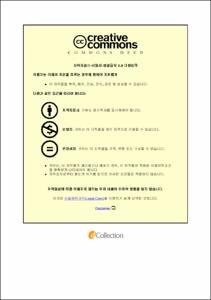양극 활물질 전구체(LNO) 공정부산물로부터 탄산리튬 및 니켈 회수 연구
- Alternative Title
- Recovery of Lithium Carbonate and Nickel from Spent Cathode Active Material Precursor(LNO)
- Abstract
- Currently, Korea is a representative resource-poor country that relies on imports for most of its metal materials. Therefore, it is necessary to establish a stable resource supply system for the survival of domestic industries. So far, many researches have been conducted here on how to recover the valuable metals, but the current level of technology makes it difficult to commercialize Cathode Active material. The market size of lithium-ion batteries is expected to reach around $19.3 billion by 2015, and total $39.6 billion by 2020.
Not only does a waste lithium-ion battery have the potential to explode as it reacts with water in the air, but there is also a lithium salinity or electrolyte contained in an organic electrolyte that causes soil problems when buried and disposed of. Also, heavy metals such as Ni and Co exist in cathode Active waste lithium-ion battery. If these valuable metals are not recycled, they can not only waste resources but also become environmental pollution. Recycling of waste lithium-ion batteries and recovery of valuable metals are very useful in both environmental and economic terms.
Currently, the most commonly used cathode Active material for lithium-ion batteries is LCO, and as usage increases, Ni is receiving spotlight as an alternative material for Co. Not only LNO but also NCA and NMC are becoming alternative cathode Active materials of LCO due to cheaper price and higher energy capacity than Co. In addition, as the usage of electric vehicles increases, the use of NCA, an cathode active material substance of electric vehicles, is increasing and the use of Ni is increasing. The global output of nickel is projected to reach 10.7 percent by 2020 and 30 percent by 2025. This is an increase in the demand for nickel used in lithium secondary batteries for electric vehicles and is expected to surpass 1 million tons by 2025. Therefore, the recovery of Ni in lithium-ion batteries is expected to be a high value technology as the use of waste lithium batteries is gradually increased as well as increased use of nickel for secondary batteries.
- Issued Date
- 2019
- Awarded Date
- 2019. 2
- Type
- Dissertation
- Publisher
- 부경대학교
- Alternative Author(s)
- pyo je jung
- Affiliation
- 부경대학교 대학원
- Department
- 대학원 금속공학과
- Advisor
- 왕제필
- Table Of Contents
- Ⅰ. 서론 1
1.1 연구배경 1
Ⅱ. 이론적 배경 3
2.1 화학전지 3
2.1.1 전지의개념 3
2.1.1.1 1차전지 3
2.1.1.2 2차전지 4
2.1.1.3 연료전지 6
2.1.2 리튬이온 전지의 구성요소와 원리 7
2.1.2.1 리튬이온 전지의 원리 7
2.1.2.2 리튬이온 전지의 구성 9
2.1.3 리튬이온전지의 시장 11
2.2 양극활물질의 구조별 특성 13
2.2.1 층상구조 15
2.2.2 스피넬구조 17
2.2.3 올리빈구조 17
2.3 재활용 현황 20
2.3.1 국내 재활용 현황 20
2.3.2 국외 재활용 현황 21
2.4 리튬이차전지의 재활용 기술 23
2.4.1 용해 23
2.4.2 산침출 24
2.4.3 용매추출 25
2.4.4 약품침전 26
2.4.5 전기화학 공정 26
2.4 Ni의 재활용 기술의 필요성 27
Ⅲ. 실험방법 및 결과 29
3.1 실험 재료 및 장비 35
3.2 실험 과정 및 결과 37
3.2.1 Li2NiO2와 CO2 열반응을 통한 상 분리 39
3.2.1.1 온도 조건 41
3.2.2 수침출 43
3.2.2.1 수침출 전처리 44
3.2.2.2 수세 46
3.2.2.3 감압여과 46
3.2.2.4 수침출 분석결과 47
3.2.3 Ni분말 제조 53
Ⅳ. 결론 60
Ⅴ. 참고문헌 62
- Degree
- Master
- Files in This Item:
-
-
Download
 양극 활물질 전구체(LNO) 공정부산물로부터 탄산리튬 및 니켈 회수 연구.pdf
기타 데이터 / 1.91 MB / Adobe PDF
양극 활물질 전구체(LNO) 공정부산물로부터 탄산리튬 및 니켈 회수 연구.pdf
기타 데이터 / 1.91 MB / Adobe PDF
-
Items in Repository are protected by copyright, with all rights reserved, unless otherwise indicated.